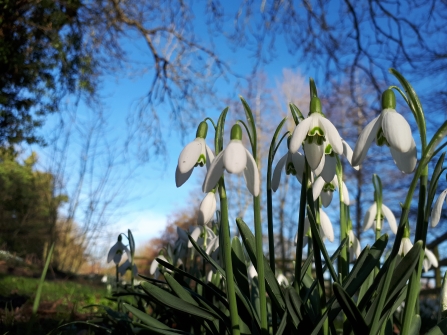When I’m feeling weary of grey winter skies, there is one flower that I particularly look forward to seeing. It’s a prelude to spring that can brighten the gloomiest of winter days; it is the snowdrop.
When other plants are still dormant, tucked up warm beneath the soil, snowdrops are growing. Their bright white nodding flowers and thin leaves may appear delicate but some of their alternative names suggest something different. In France, they are more commonly known as pierce-neige; snow piercer.




